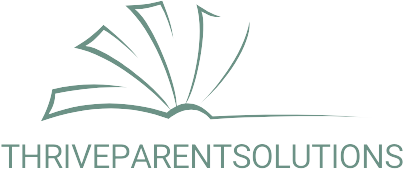As the world of education evolves, many parents find themselves asking, “Is homeschooling expensive?” It’s a valid question, especially when considering the costs of curriculum materials, resources, and maybe a few extra snacks to bribe reluctant learners. The truth is, homeschooling can range from budget-friendly to wallet-busting, depending on how one approaches it.
Imagine trading in the daily grind of school drop-offs for a cozy learning environment at home. Sounds dreamy, right? But before diving into this adventure, it’s essential to weigh the financial implications. From textbooks to tech gadgets, the costs can add up faster than a kid can say “I’m bored.” So, let’s explore the ins and outs of homeschooling expenses and discover if this educational journey is worth the investment.
Table of Contents
ToggleUnderstanding Homeschooling Costs
Homeschooling costs vary based on multiple factors. Initial expenses and ongoing costs represent two primary categories.
Initial Setup Expenses
Initial setup expenses often include curriculum materials, textbooks, and classroom furniture. Parents may invest in online courses or educational software as well. Some families opt for expensive resources, increasing the overall cost. For materials, average spending ranges from $300 to $1,500 annually, depending on the curriculum chosen. Setting up a dedicated learning space can also involve costs, such as desks and organizational tools. Overall, the setup phase can create a significant upfront financial commitment.
Ongoing Costs
Ongoing costs encompass continued material purchases, supplies, and extracurricular activities. Monthly expenses may include subscriptions to educational websites or costs for field trips. Some families allocate budgets for group classes or co-ops that enhance the learning experience. On average, ongoing costs can range from $250 to $1,000 each year. Regular evaluations of spending help parents manage and adjust their budgets effectively. These factors play a crucial role in determining the total financial impact of homeschooling.
The Cost Comparison

Examining the financial aspects of homeschooling versus traditional schooling reveals significant differences. On average, traditional schooling costs range from $8,000 to $15,000 per child, accounting for tuition, uniforms, and transportation. Many families find that homeschooling can be more economical, especially at the lower end of the initial setup costs, which sit between $300 and $1,500 annually. This option allows parents to customize their educational approach and materials based on their budget.
Homeschooling vs. Traditional Schooling
Homeschooling expenses can differ greatly compared to traditional schooling. Families who choose traditional options often face consistent tuition payments throughout the year, alongside additional fees for extracurricular activities and supplies. In contrast, homeschoolers control their spending by selecting affordable resources. It can lead to substantial savings in certain situations. Additionally, some parents avoid costs by utilizing free online resources or community programs, creating unique educational experiences without excessive financial burdens.
Additional Expenses in Homeschooling
Expenses in homeschooling often extend beyond basic materials. Costs associated with educational field trips and extracurricular activities can add up, often ranging from $100 to $500 annually per child. Some families invest in co-op memberships or classes, which provide socialization opportunities and structured learning. Technology also plays a role; online courses or educational software can start at $100 and go much higher, depending on the provider. Parents should consider these supplementary expenses when evaluating the overall cost of their homeschooling choice.
Budgeting for Homeschooling
Budgeting for homeschooling involves understanding both initial and ongoing costs. Parents should consider various factors affecting their financial planning before starting.
Creating a Homeschooling Budget
Creating a homeschooling budget requires itemizing anticipated expenses. First, account for curriculum materials, which may range from $300 to $1,500 annually. Next, consider ongoing costs, such as supplies and extracurricular activities, averaging between $250 to $1,000 each year. Parents often find it helpful to track monthly spending for better financial management. Evaluating educational needs and available resources can lead to a more precise budget. Setting realistic goals ensures parents allocate funds effectively. Regular reviews of the budget can help in adjusting any unforeseen costs as homeschooling progresses.
Cost-Effective Resources and Materials
Cost-effective resources and materials enhance the homeschooling experience without overspending. Many families utilize free or low-cost online resources, such as educational websites or community programs. Local libraries often provide access to numerous textbooks and supplementary materials at no charge. Parents can also benefit from sharing resources within homeschooling co-ops, which helps divide costs among families. Investing in second-hand books or digital curriculums can further reduce expenses. Assessing the unique learning style and preferences of the child allows for tailored resource selection. Exploring community events or free workshops offers additional educational opportunities while minimizing costs.
Factors Affecting Homeschooling Expenses
Homeschooling expenses vary based on several factors, including family size, income levels, and curriculum choices. Understanding these elements helps parents plan finances effectively.
Family Size and Income
Family size significantly impacts homeschooling costs. Larger families may find certain expenses multiplied, such as curriculum materials and supplies. Smaller families might experience lower overall spending, yet each child may require unique resources. Income levels also play a crucial role; higher incomes often afford more options, enabling families to choose premium educational materials or extracurricular activities. Families with lower incomes tend to explore budget-friendly alternatives, ensuring access to education that fits their financial situation.
Curriculum Choices
Curriculum choices directly affect expenditure levels. Some families opt for traditional textbooks and structured programs, costing anywhere from $300 to $1,500 annually. Others embrace alternative methods, such as unschooling or interest-led learning, often requiring less formal material investment. Online courses and educational software typically increase costs, ranging from $100 to over $1,000, depending on features chosen. Parents selecting free or low-cost resources can significantly lower overall expenses, allowing flexibility in content while maintaining educational quality. Ultimately, the chosen curriculum shapes the homeschooling budget significantly.
Homeschooling can be a financially viable option for many families. While initial and ongoing costs can add up, they often remain lower than traditional schooling expenses. By carefully evaluating their budget and exploring cost-effective resources, parents can tailor their homeschooling experience to fit their financial situation.
Ultimately, the decision to homeschool should consider both educational goals and financial implications. With proper planning and resourcefulness, families can provide a quality education while managing expenses effectively.





